Ingredient Butter

What are some unique ingredients commonly used in French desserts ?
French desserts are renowned for their exquisite taste and delicate textures, which are largely due to the unique ingredients used in their preparation. These include vanilla beans, almond meal, cream, butter, lemon zest, and kirsch. Each ingredient plays a crucial role in enhancing the flavor, aroma, and texture of French desserts. Understanding the importance and usage of these ingredients can help you appreciate the artistry behind French pastry making and even try your hand at creating your own delectable treats.

What is the secret to making soft and chewy brownies ?
The secret to making soft and chewy brownies involves using high-quality unsweetened chocolate, butter for tenderness, granulated sugar for chewiness, eggs for binding and structure, all-purpose flour for structure without toughness, cocoa powder for intensified chocolate flavor, and baking powder for leavening. Techniques include undermixing the batter, melting chocolate and butter together for smooth integration, baking at a lower temperature for a longer period to ensure even cooking, and avoiding overbaking. Add-ins like chocolate chips, nuts, or flavorings can enhance the experience. Key steps involve preheating the oven, mixing dry ingredients, melting chocolate and butter, combining wet ingredients, adding dry to wet, baking, cooling, and cutting. Tips for success include using room-temperature ingredients, avoiding overbaking, and letting the brownies rest before cutting.

What are some common mistakes people make when baking cookies ?
Baking cookies is a beloved pastime for many, but it can also be fraught with pitfalls. Here are some common mistakes people make when baking cookies: Not measuring ingredients accurately using volume measurements instead of weight, incorrect use of measuring tools, not sifting dry ingredients, overmixing or undermixing the dough, handling the dough too much, not preheating the oven, not using an oven thermometer, placing cookies too close together, using inferior quality chocolate or nuts, substituting ingredients without adjustment, not bringing eggs and butter to room temperature, underbaking or overbaking, not rotating the cookie sheet, baking at the wrong temperature, storing cookies improperly, and not considering shelf life. By avoiding these common mistakes, you can elevate your cookie game and enjoy consistently delicious treats every time you bake.

What are the key ingredients in Indian cooking ?
Indian cuisine is known for its rich flavors and diverse dishes. The key ingredients that make Indian cooking unique are spices, herbs, ghee, lentils, rice, yogurt, nuts and seeds, and bread. These ingredients add flavor, color, and aroma to the dishes and create authentic and delicious Indian cuisine.

How can I improve my pie crust recipe ?
To improve your pie crust recipe, focus on using high-quality ingredients like all-purpose flour and unsalted butter. When mixing the dough, combine dry ingredients first, then cut in cold butter until it resembles coarse crumbs. Gradually add ice-cold water and gently knead the dough until it forms a cohesive ball. Avoid overworking the dough to prevent toughness. For rolling out the dough, chill it first to firm up the butter and prevent shrinkage. Roll out the dough on a lightly floured surface to an even thickness of about 1/8 inch. Carefully transfer the rolled-out dough to your pie plate, trim excess, and crimp the edges as desired. Blind bake single crust pies by pre-baking with pie weights or dried beans for 15-20 minutes at 375°F before adding the filling. For double crust pies, brush the top crust with an egg wash for shine and seal cracks or gaps. Cut small slits in the top crust to vent steam during baking. Bake at the specified temperature (usually between 350°F and 375°F) and check for doneness by inserting a knife into the center of the filling; if it comes out clean, the pie is ready. Allow it to cool completely before slicing to avoid a runny filling.

How do I know if a product is truly organic ?
Identifying truly organic products requires looking for certification labels, checking the ingredient list, researching the manufacturer or brand, and visiting farmers markets and local stores. Certification labels such as USDA Organic, Euro-leaf, and JAS indicate that the product meets specific standards for organic production. The ingredient list should indicate that all ingredients are organic and free from GMOs. Researching the manufacturer or brand can provide information about their farming practices and quality control processes. Visiting farmers markets and local stores allows you to ask questions about the products and see them firsthand. By following these tips, you can ensure that you are getting genuine organic products that are free from harmful chemicals and pesticides.

How do professional bartenders measure ingredients for consistency ?
Professional bartenders use a variety of tools and techniques to measure ingredients consistently. Accuracy is crucial for maintaining the same flavor profile and balancing different tastes in cocktails. Efficiency is also important, as it speeds up drink-making and allows bartenders to focus on customer interaction. Jiggers are commonly used tools for measuring both large and small quantities of liquids. Measuring spoons are used for smaller amounts like bitters or syrup. Digital scales are used for precise measurements by weight, especially for ingredients like fruit juices or syrups. Pour spouts and containers help control the flow of liquids to reduce spillage and waste. Standardization processes such as recipe cards, batching, and taste testing are also essential. Recipe cards include detailed measurements for each ingredient, helping new bartenders learn quickly and maintain consistency. Batching involves pre-mixing a large volume of a single cocktail ingredient or an entire recipe, saving time during busy shifts and ensuring uniformity. Taste tests are crucial even with precise measurements, as bartenders adjust recipes based on customer feedback and ingredient freshness. In conclusion, professional bartenders rely on a combination of tools, techniques, and standardized processes to measure ingredients consistently. This ensures that they can replicate the perfect cocktail every time, providing a high-quality experience for their customers.

How do I bake a fluffy vanilla sponge cake ?
Baking a fluffy vanilla sponge cake is a delightful experience for both beginners and seasoned bakers. Here are the steps to follow: ### Ingredients: - **200g All-purpose flour** - **200g Granulated sugar** - **100g Unsalted butter (room temperature)** - **4 Large eggs** - **1 tsp Baking powder** - **1/2 tsp Salt** - **1 tbsp Vanilla extract** ### Tools: - Mixing bowls - Electric mixer or whisk - Measuring cups and spoons - Sieve - 8-inch cake pan - Parchment paper - Oven ### Steps: #### Preheat Your Oven 1. **Preheat your oven to 175°C (350°F).** #### Prepare Your Pan 2. **Line the bottom of your cake pan with parchment paper.** #### Mix Dry Ingredients 3. **Sift together the flour, baking powder, and salt.** #### Cream Butter and Sugar 4. **In a separate bowl, cream the butter and sugar until light and fluffy.** #### Add Eggs and Vanilla 5. **Add the eggs one at a time, mixing well after each addition. After all the eggs are incorporated, add the vanilla extract.** #### Combine Wet and Dry Ingredients 6. **Gradually fold the dry ingredients into the wet mixture, being careful not to overmix.** #### Bake Your Cake 7. **Pour the batter into your prepared pan and smooth the top. Bake for 25-30 minutes, or until a toothpick inserted into the center comes out clean.** #### Cool and Decorate 8. **Allow the cake to cool in the pan for 10 minutes before turning it out onto a wire rack to cool completely. Once cooled, you can decorate as desired.**

What are some dinner recipes that are perfect for entertaining guests ?
Hosting a dinner party is a delightful way to gather friends and family. To make the event memorable, it's important to serve dishes that are not only delicious but also suitable for entertaining. Here are some recipes that are perfect for impressing your guests: ## Appetizers ### Bruschetta with Tomatoes and Basil #### Ingredients: - Fresh tomatoes, diced - Garlic, minced - Fresh basil leaves, chopped - Olive oil - Balsamic vinegar - Salt and pepper - Baguette, sliced and toasted #### Instructions: 1. In a bowl, mix together diced tomatoes, minced garlic, chopped basil, olive oil, balsamic vinegar, salt, and pepper. 2. Toast the baguette slices until crispy. 3. Top each slice with the tomato mixture and serve. ### Spinach and Artichoke Dip #### Ingredients: - Frozen spinach, thawed and drained - Canned artichoke hearts, drained and chopped - Cream cheese, softened - Sour cream - Garlic powder - Salt and pepper #### Instructions: 1. Preheat oven to 375°F (190°C). 2. In a mixing bowl, combine all ingredients until well blended. 3. Transfer the mixture to an oven-safe dish. 4. Bake for 20-25 minutes or until hot and bubbly. 5. Serve with crackers or bread. ## Main Courses ### Lemon Herb Roasted Chicken #### Ingredients: - Whole chicken - Lemons, quartered - Fresh herbs (rosemary, thyme, sage) - Olive oil - Garlic cloves, peeled - Salt and pepper #### Instructions: 1. Preheat oven to 425°F (220°C). 2. Season the chicken inside and out with salt and pepper. 3. Stuff the cavity with lemon wedges, herbs, and garlic cloves. 4. Rub the outside of the chicken with olive oil and sprinkle with more salt and pepper. 5. Roast in the oven for about 1 hour and 15 minutes or until the internal temperature reaches 165°F (75°C). 6. Let rest before carving and serving. ### Beef Wellington #### Ingredients: - Filet mignon steaks - Mushroom duxelles - Puff pastry sheets - Egg wash (egg beaten with a splash of water) - Salt and pepper #### Instructions: 1. Season filets with salt and pepper and sear in a hot pan until browned on all sides. Set aside to cool. 2. Spread mushroom duxelles over the puff pastry sheet. 3. Place the cooled filets on top of the duxelles and wrap tightly with the pastry. 4. Brush with egg wash and bake at 425°F (220°C) for about 20 minutes or until golden brown. 5. Allow to rest for a few minutes before slicing and serving. ## Side Dishes ### Garlic Mashed Potatoes #### Ingredients: - Potatoes, peeled and cubed - Milk or cream - Butter - Garlic, minced - Salt and pepper #### Instructions: 1. Boil potatoes in salted water until tender. 2. Drain the potatoes and return them to the pot. 3. Add milk or cream, butter, and minced garlic. 4. Mash until smooth and season with salt and pepper to taste. ### Roasted Vegetable Medley #### Ingredients: - Assorted vegetables (carrots, bell peppers, zucchini, etc.), chopped into bite-sized pieces - Olive oil - Salt and pepper - Dried herbs or Italian seasoning #### Instructions: 1. Preheat oven to 400°F (200°C). 2. Toss vegetables with olive oil, salt, pepper, and herbs. 3. Spread out on a baking sheet and roast for about 25-30 minutes or until tender and slightly caramelized. ## Desserts ### Chocolate Lava Cakes #### Ingredients: - Dark chocolate, chopped - Butter - Eggs - Sugar - All-purpose flour - Vanilla extract
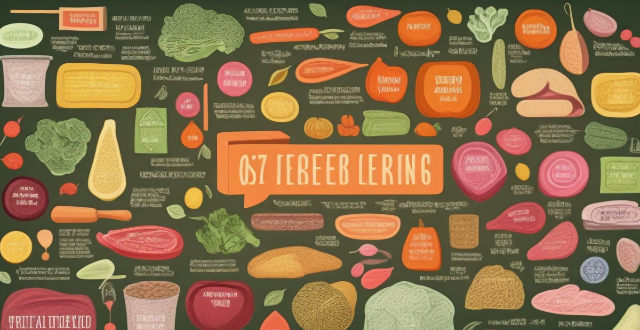
How does food labeling contribute to food safety ?
Food labeling is crucial for food safety as it provides consumers with essential information. It includes ingredient lists, nutritional information, expiration dates, manufacturing details, storage instructions, certification marks, allergy warnings, country of origin, precautionary statements, and environmental impact information. Proper labeling practices help identify ingredients, understand nutritional values, recognize potential risks, and make informed decisions about food consumption.
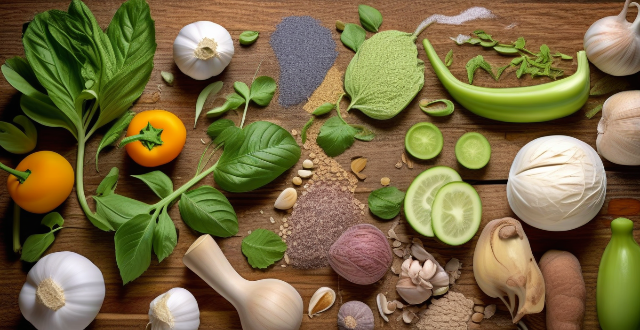
What ingredients are commonly used in Mexican cooking to create its unique flavor profile ?
The article provides an overview of the key ingredients used in Mexican cooking, including chili peppers like ancho, jalapeño, serrano, and habanero; herbs and spices such as cumin, coriander, oregano, and cilantro; and other ingredients like tomatoes, onions, garlic, lime juice, epazote, and hominy. It explains how these ingredients contribute to the distinctive flavor profile of Mexican cuisine and encourages readers to experiment with creating authentic Mexican meals at home.
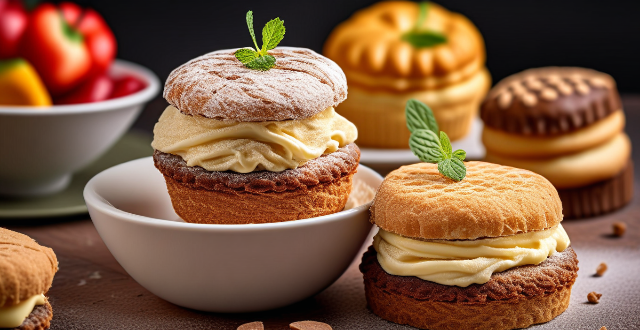
How do French desserts differ from American or British desserts ?
French desserts are known for their high-quality ingredients, precise techniques, and elegant presentation. Popular options include crème brûlée, macarons, and tarte tatin. In contrast, American and British desserts often use simpler ingredients and techniques, with a focus on convenience and taste over appearance. Popular choices include pies, brownies, and cheesecakes.
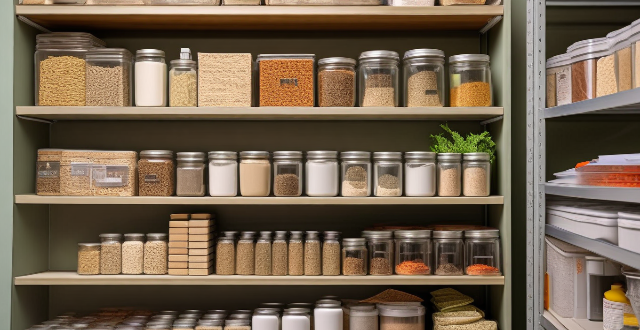
How long do homemade natural cleaners typically last before they lose their potency ?
Homemade natural cleaners' shelf life depends on factors like ingredients, storage, and concentration. To extend their lifespan, use high-quality ingredients, store properly, label with dates, avoid cross-contamination, and consider adding natural preservatives.

How do French pastry chefs achieve such delicate textures in their desserts ?
French pastry chefs are renowned for their ability to create desserts with exquisite textures that melt in your mouth. Achieving such delicate results involves a combination of precise techniques, high-quality ingredients, and meticulous attention to detail. Here's a breakdown of the key factors: 1. Mastery of Basic Techniques 2. Use of High-Quality Ingredients 3. Precision Cooking Methods 4. Creative Combinations 5. Attention to Detail

What are the most common ingredients used in gluten-free baking ?
Gluten-free baking is a method of preparing baked goods without using wheat flour or other sources of gluten. Here are the most common ingredients used in gluten-free baking: Flours and Starches: Rice Flour, Almond Flour, Potato Starch, Tapioca Flour, Cornstarch Binding Agents: Xanthan Gum, Guar Gum, Eggs Sweeteners: Honey, Maple Syrup, Stevia Fats and Oils: Butter, Coconut Oil, Olive Oil

What are some tips for beginners in baking ?
Baking is a rewarding hobby that can bring joy and delicious treats to your life. Here are some tips to help beginners get started: 1. Read the recipe thoroughly before starting. 2. Use the right ingredients, fresh and as specified in the recipe. 3. Prep your ingredients beforehand. 4. Follow the recipe steps carefully. 5. Practice patience during the baking process. 6. Learn from your mistakes and keep practicing.

What are the key differences between classic and modern cocktail styles ?
Cocktail styles have evolved over time, with classic cocktails representing traditional recipes and techniques, while modern cocktails often showcase innovative ingredients and presentation methods. Classic cocktails are known for their simplicity, limited ingredient list, standard measurements, traditional garnishes, and historical significance. Examples include the Martini, Old Fashioned, and Daiquiri. Modern cocktails, on the other hand, feature innovation, complexity, craft methods, visual appeal, and locally sourced ingredients. Examples include the Earl Grey MarTEAni, Smoked Old Fashioned, and Lavender Lemon Drop. In summary, classic cocktails pay homage to the roots of mixology, while modern cocktails celebrate creativity and the ongoing evolution of the craft. Both styles offer a unique drinking experience and cater to different preferences among cocktail enthusiasts.

What kind of chocolate is typically used in French chocolate desserts ?
The article discusses the importance of chocolate selection in French chocolate desserts, highlighting the use of dark, milk, white, and unsweetened chocolate. It emphasizes the rich culinary heritage of France that demands quality ingredients, especially in chocolate desserts. The article also suggests considering the desired outcome of the dish, taste testing, and experimentation to find the perfect chocolate for a particular dessert.

How does the use of chilies contribute to the distinctive taste of Mexican food ?
Chilies play a pivotal role in Mexican cuisine, contributing heat, flavor complexity, color, and cultural significance. They offer varying intensities of spiciness, from mild to very hot, and their fruity or earthy flavors complement other ingredients. Visually appealing with vibrant colors, chilies also have nutritional benefits like antioxidants and metabolism boost. They are versatile in cooking, used fresh, dried, or smoked, and pair well with acidic and herbal ingredients. Chilies are integral to traditional dishes like enchiladas and mole sauce, showcasing their essential role in defining the unique taste profile of Mexican food.

What are some must-try festive desserts for Halloween ?
Halloween is a time for spooky fun and delicious treats. Here are some must-try festive desserts that will make your Halloween celebration even more special: Pumpkin Pie, Candy Apples, Ghostly Cupcakes, Spooky Brownies, and Witch's Brew Punch.
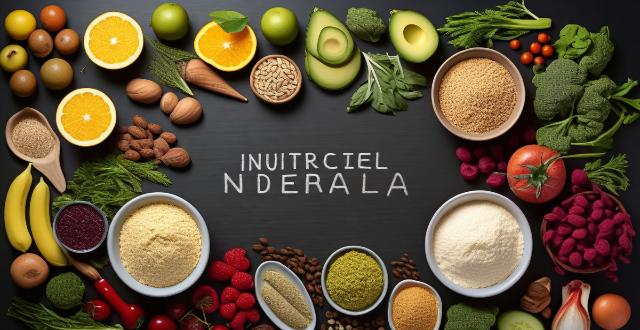
What are the key elements of a baby's nutrition during the first year ?
Infant nutrition is crucial for growth and development during the first year. Key elements include breast milk or formula as the primary source of nutrition, the introduction of solid foods around six months, iron supplementation for breastfed babies, vitamin D supplementation, limited fluid intake in the first six months, the introduction of allergens one at a time, and no evidence that early gluten introduction prevents celiac disease. Consulting with a healthcare professional is recommended for specific dietary needs or concerns.

How do I make the perfect chocolate cake ?
This text provides a detailed guide on how to make the perfect chocolate cake, including a list of ingredients and step-by-step instructions. It emphasizes precision, patience, and specific techniques for achieving a rich, moist, and delicious result. The guide covers everything from preheating the oven and mixing ingredients to baking and cooling the cake. Additionally, it offers tips for success such as sifting dry ingredients, ensuring room temperature ingredients, avoiding overmixing, proper oven rack position, and using a toothpick test to check doneness.

How can I make a fast and easy dinner ?
Here are some tips on how to make a fast and easy dinner: 1. Plan ahead by taking time during the weekend to plan your meals for the week. This will help you avoid last-minute trips to the grocery store and ensure that you have all the ingredients you need on hand. 2. Choose simple recipes that require minimal preparation and cooking time. Look for recipes that use fewer than five ingredients and can be cooked in one pot or pan. 3. Use convenience foods such as pre-chopped vegetables, pre-cooked proteins, and ready-to-heat side dishes to save time and effort in the kitchen. 4. Cook enough food for two meals at once and refrigerate or freeze the leftovers for another day. This will save you time and ensure that you always have a healthy meal ready to go. 5. Clean up as you cook by wiping down counters, washing dishes, and putting away ingredients as soon as you're done using them. This will keep your kitchen tidy and prevent clutter from building up while you cook.
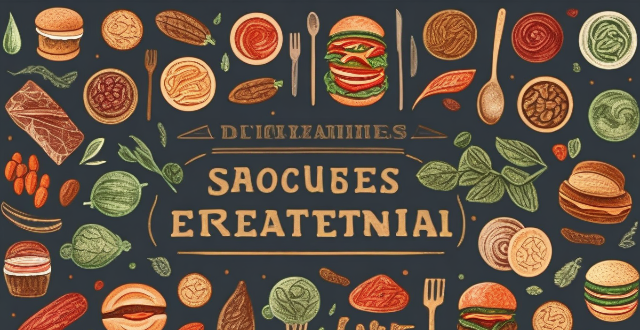
Is Indian food spicy ?
The text discusses the spiciness of Indian food, explaining that it varies greatly depending on several factors such as regional variations, personal preferences, specific dish characteristics, ingredients contributing to spiciness, and cultural considerations. It notes that some dishes can be very spicy while others may be mild or even sweet, and suggests asking for a milder version or specifying preferences when ordering if one has a low tolerance for spice.

How can I make healthier choices when eating out at restaurants ?
The text offers a comprehensive guide on how to make healthier choices when eating out at restaurants. It outlines strategies such as planning ahead, starting with a salad, controlling portion sizes, choosing cooking methods wisely, being mindful of sauces and condiments, drinking water, not fearing special requests, and practicing mindful eating. These tips aim to help individuals maintain a balanced and healthy lifestyle while still enjoying dining out experiences. The key takeaways are the importance of moderation, making informed choices, and listening to one's body to avoid overeating.

How do I know if a product is truly gluten-free ?
Gluten-free products are becoming increasingly popular, but it's important to know how to identify whether a product is truly gluten-free. Here are some tips: 1. Check the Label 2. Look for Certifications 3. Read the Ingredient List 4. Be Wary of Cross-Contamination 5. Trust Reputable Brands 6. Ask Questions

What are some easy and nutritious breakfast recipes for busy people ?
**Quick and Nutritious Breakfast Recipes for Busy People** 1. **Overnight Oats:** A no-cook, make-ahead breakfast with rolled oats, almond milk, chia seeds, honey, and fruit. Soak overnight in the fridge for a quick morning meal. 2. **Smoothie Bowls:** Customizable breakfast bowls made with blended banana, frozen berries, Greek yogurt, honey, and toppings like granola or fresh fruit. 3. **Avocado Toast:** A popular and nutritious breakfast with whole grain bread, ripe avocado, salt, pepper, and optional extras like lemon juice or boiled eggs. 4. **Peanut Butter and Banana Wrap:** An easy-to-eat breakfast wrap made with whole wheat tortilla, peanut butter, sliced banana, and a drizzle of honey.

How do I choose eco-friendly cleaning products ?
This text provides a comprehensive guide on choosing eco-friendly cleaning products, emphasizing the importance of understanding eco-friendly labels, checking ingredient lists for harmful chemicals, opting for concentrated and reusable packaging options, supporting green brands, and considering homemade cleaners. By following these steps, consumers can make informed choices that contribute to a healthier planet and home environment.
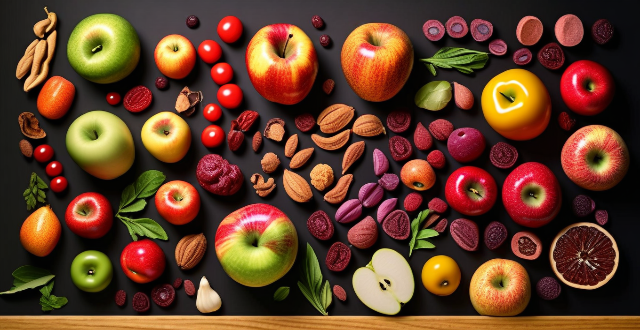
What are the best low-calorie snacks to eat between meals ?
When it comes to snacking between meals, low-calorie options that provide nutritional benefits are key. Fruits like apple slices with almond butter and berries with Greek yogurt are great choices. Vegetables such as carrot sticks with hummus and bell pepper strips with guacamole offer vitamins and healthy fats. Nuts and seeds like almonds, pistachios, and sunflower seeds provide protein and fiber but require portion control. Whole grains like air-popped popcorn and rice cakes with avocado spread are also good options. Incorporating these snacks can help you stay satisfied without derailing your diet goals.